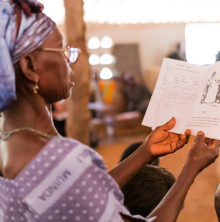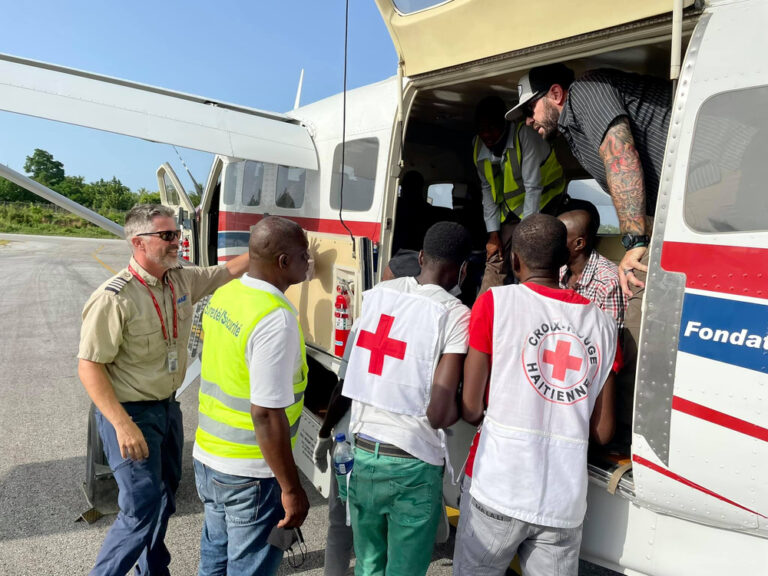Story and photos by MAF pilot Joe Adams in Lesotho
My phone buzzes at 5:27 a.m. on a Saturday morning. As the on-call pilot, I knew this could happen, but sometimes we go all weekend without a Code 1 medical emergency call.
The flight follower, Pokello, tells me of a 16-year-old expectant mother whose labor is stalled, and the baby is in distress. The flight will be from Manamaneng to the district hospital in Thaba Tseka.
I inhale some coffee and my wife’s delicious cinnamon twists, and head to the airport to preflight the plane. I take off and touch down in Manamaneng just before 8 a.m. The young mother in labor and nurse Puseletso walk toward the plane. One look at the fear and pain on the girl’s face shows the seriousness of the situation.
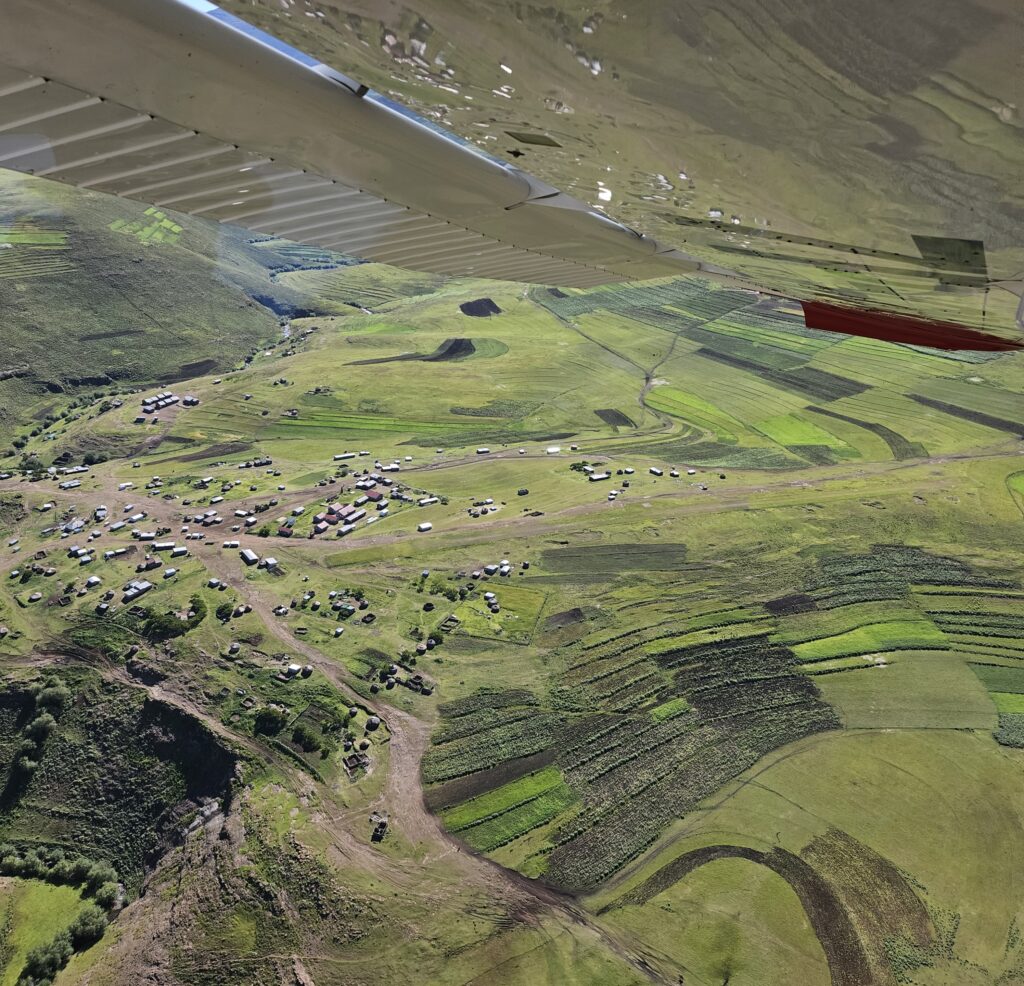
I strap them into their seats, run through my checklists, and quickly say a prayer before we take off.
The flight to Thaba Tseka usually takes 15 minutes, but considering the girl’s suffering and the possibility of a birth enroute, I choose to fly the aircraft at maximum continuous power. Ten minutes later, we land and taxi to the waiting ambulance. The ambulance will take the girl directly to the OR for a C-Section. Mission accomplished!
After dropping nurse Puseletso off at Manamaneng, I make the 40-minute return flight to our base at Maseru. The aircraft is refueled and put back in the hangar.
As we depart, Pokello makes a joke about how we might meet again. I am home 20 minutes when the phone rings. It’s Pokello again! A critical patient needs a flight from the district hospital in Qachas Nek to Maseru for more advanced treatment.
Our friend, Tebello, who lives at our home and is also a private pilot, jumps at the chance to come along on the flight. I am glad to bring along someone who is familiar with aircraft and a native Sesotho speaker.
Just before noon, we lift off from Maseru enroute to Qachas Nek. The joy on Tebello’s face as she serves as autopilot is unmistakable! I retake the controls for the landing.
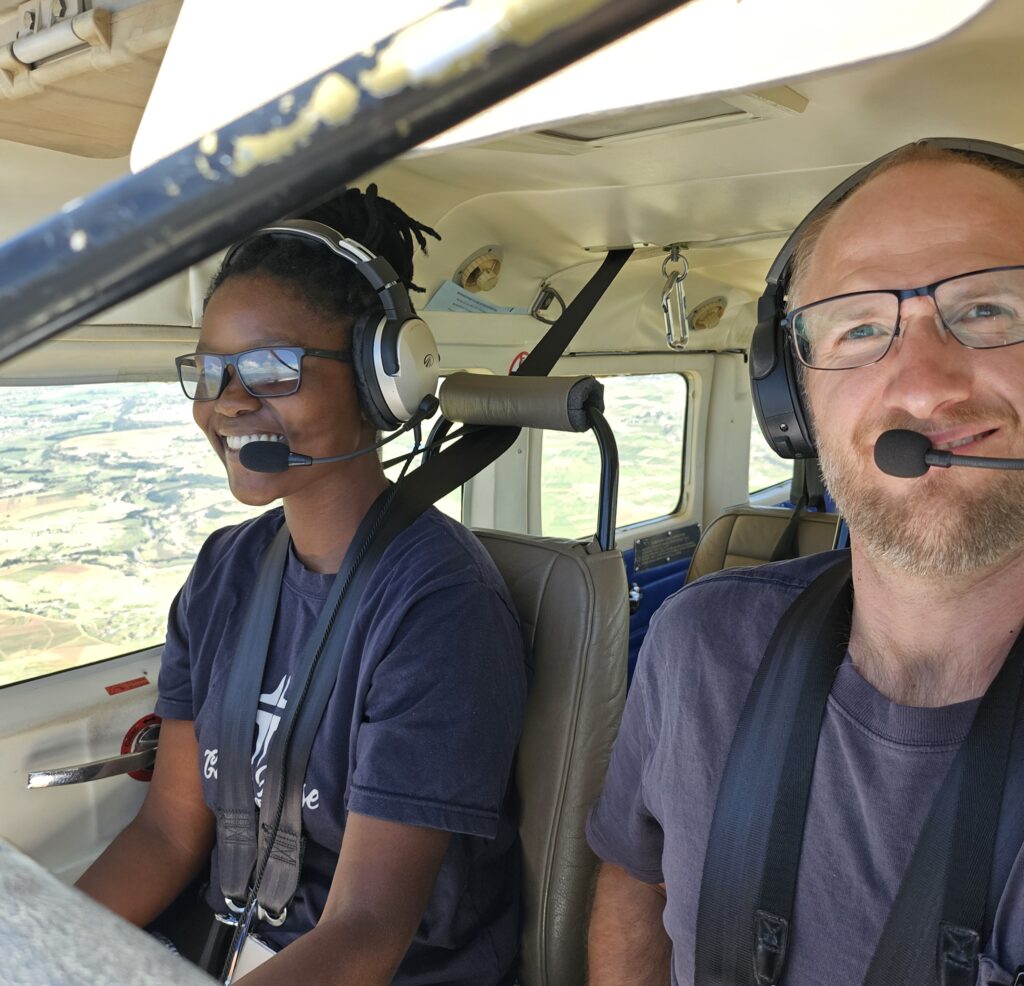
My phone is ringing as I shut down the plane. Who could it be? You guessed it…Pokello! He has another Code 1 for me. A newborn baby in distress needs to get to the district hospital at Qachas Nek. The mother and baby are at Lebakeng, a 10-minute flight (but 5-hour drive) away.
Change of plans! We put the original patient at Qachas Nek on hold, fly to Lebakeng and collect the mother and baby, and bring them to Qachas Nek.
Despite a strong crosswind at Lebakeng, by God’s grace we have a stable approach and a smooth landing. It’s only 1 p.m. but already this is feeling like a full day.
The baby needs oxygen, and fortunately our portable oxygen bottle is on board. After securing the bottle to the floor of the aircraft and loading the mother and baby, we are off again, back to the district hospital at Qachas Nek. Though we do not have a nurse onboard, the attentive mother constantly adjusts the oxygen canula to make sure it is flowing to her tiny newborn. Sometimes Code 1 flights bring great joy, and this is one, as I see the love in the eyes of this mother for her child.
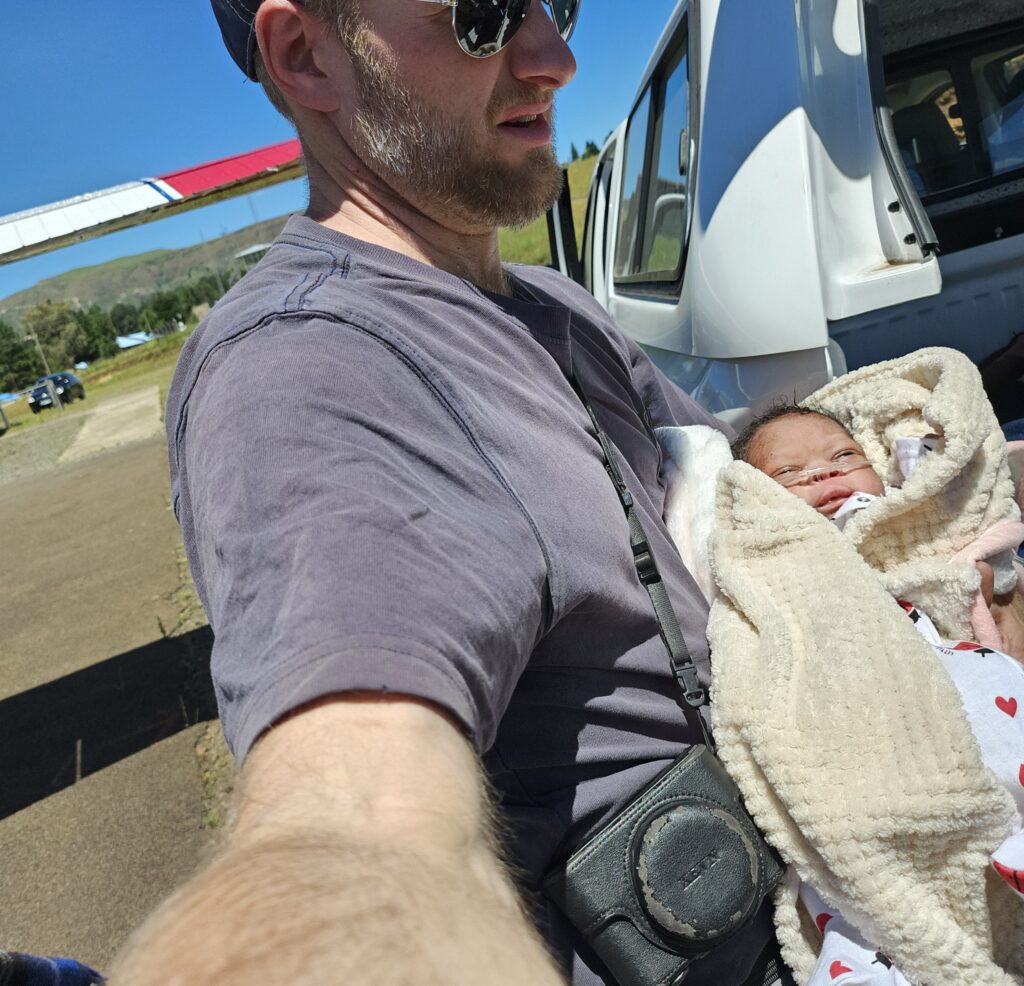
Arriving overhead Qacha, the windsocks tell me to set up for a “downhill” landing. On final approach, I realize the wind has shifted and my groundspeed is over my briefed limit. Time for a go around! I power up, climb out, and land from the other direction. Everything is within limits, and we touch down smoothly. The “ambulance”—a truck with a canopy—is waiting to pick up baby and mom and give us the original Code 1 for evacuation to Maseru.
The patient from Qacha has ingested a poison and is semi-conscious, requiring a stretcher and oxygen. To load the patient, I reconfigure the aircraft by removing two seats and installing the stretcher.
Tebello, speaking Sesotho, helps coordinate the loading of the patient along with the attending nurse and a porter, while I secure seats, stow bags, hang an IV drip, route oxygen lines, secure tie downs for the stretcher, calculate weight, estimate takeoff distance, and complete checklists.
Just before I start the engine, Tebello prays in Sesotho for the patient and for our flight. After the pressure of all the preparation, I feel a wave of peace and gratefulness as we level off at cruise altitude with the beautiful green mountains sliding by underneath. I look back to see the patient sleeping peacefully. After a few minutes of mental rest, it’s time to regain my focus and prepare for my eighth landing of the day. It’s just under a one-hour flight by the time my plane comes to a stop at Maseru, and then the patient is loaded onto the ambulance.
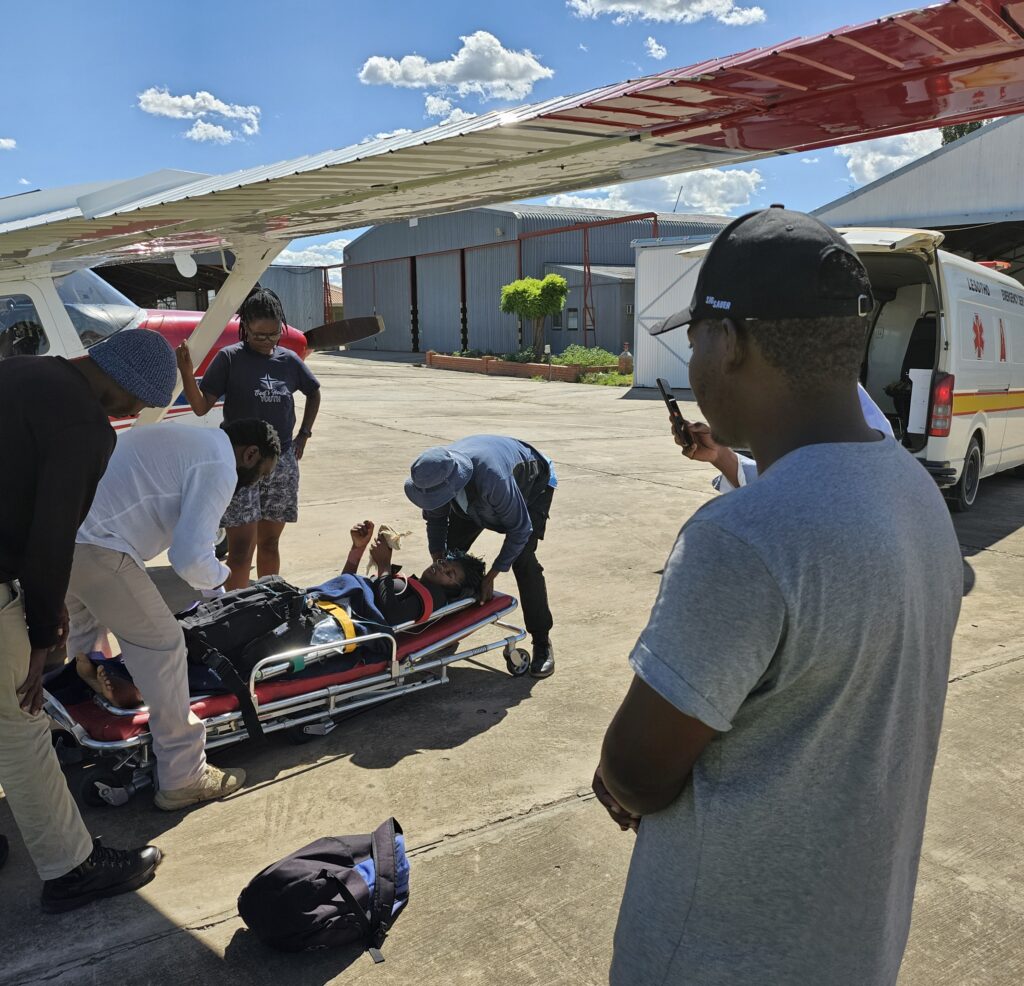
As the siren of the ambulance fades into afternoon traffic, we get to work; the day is not yet done! Pokello, Tebello, and I prepare the aircraft again for another possible Code 1 by fueling and cleaning it. As we depart the hangar for our homes, I joke with Pokello that he is not allowed to predict another Code 1! And he doesn’t. About 3:30 that afternoon I arrive home with Tebello to a late lunch.
It was a full day of bringing help, hope, and healing through aviation to isolated people. I am tired, but joyful to be part of an organization that allows me to use my gifts and talents in a tangible way to share the love of Jesus Christ with the people of Lesotho.

